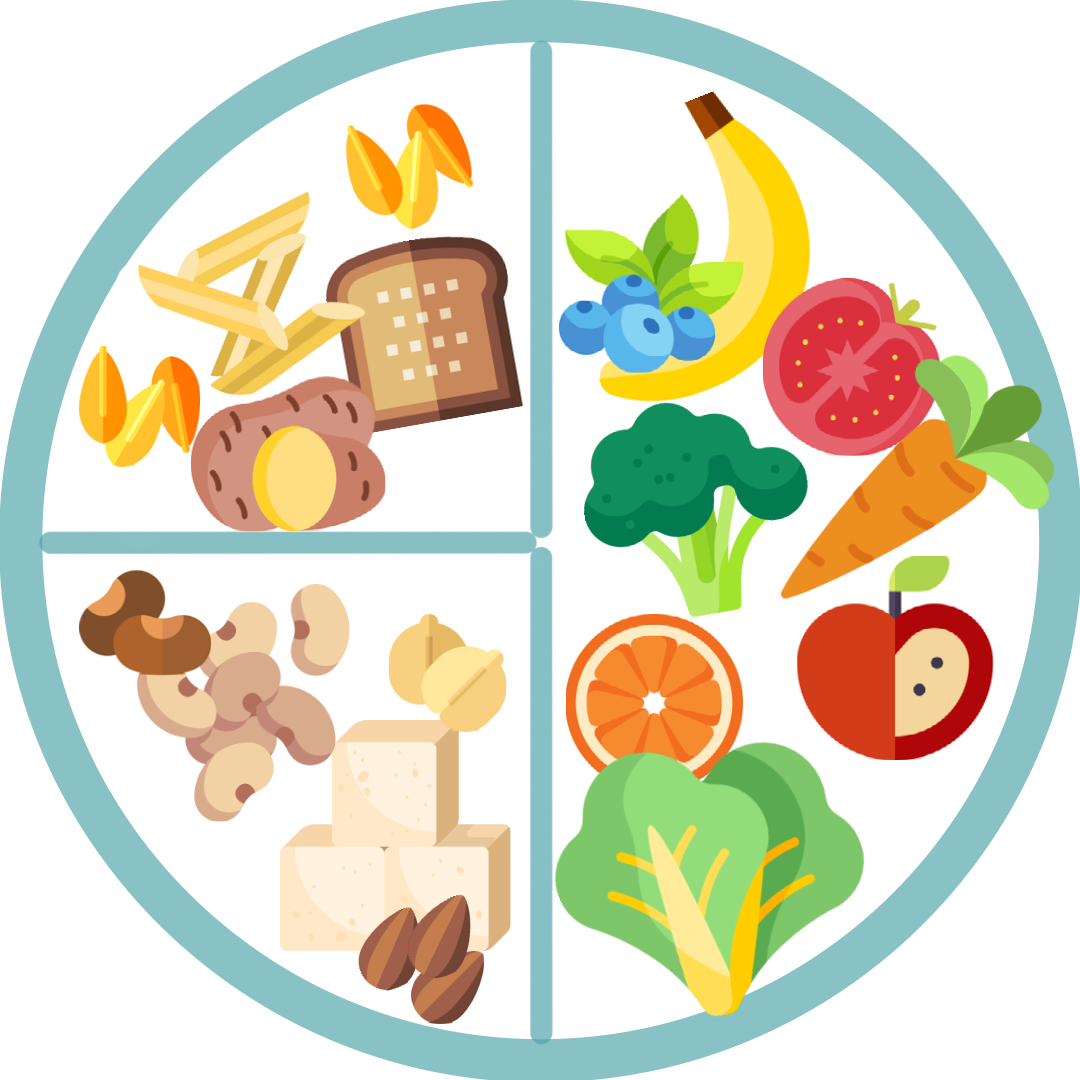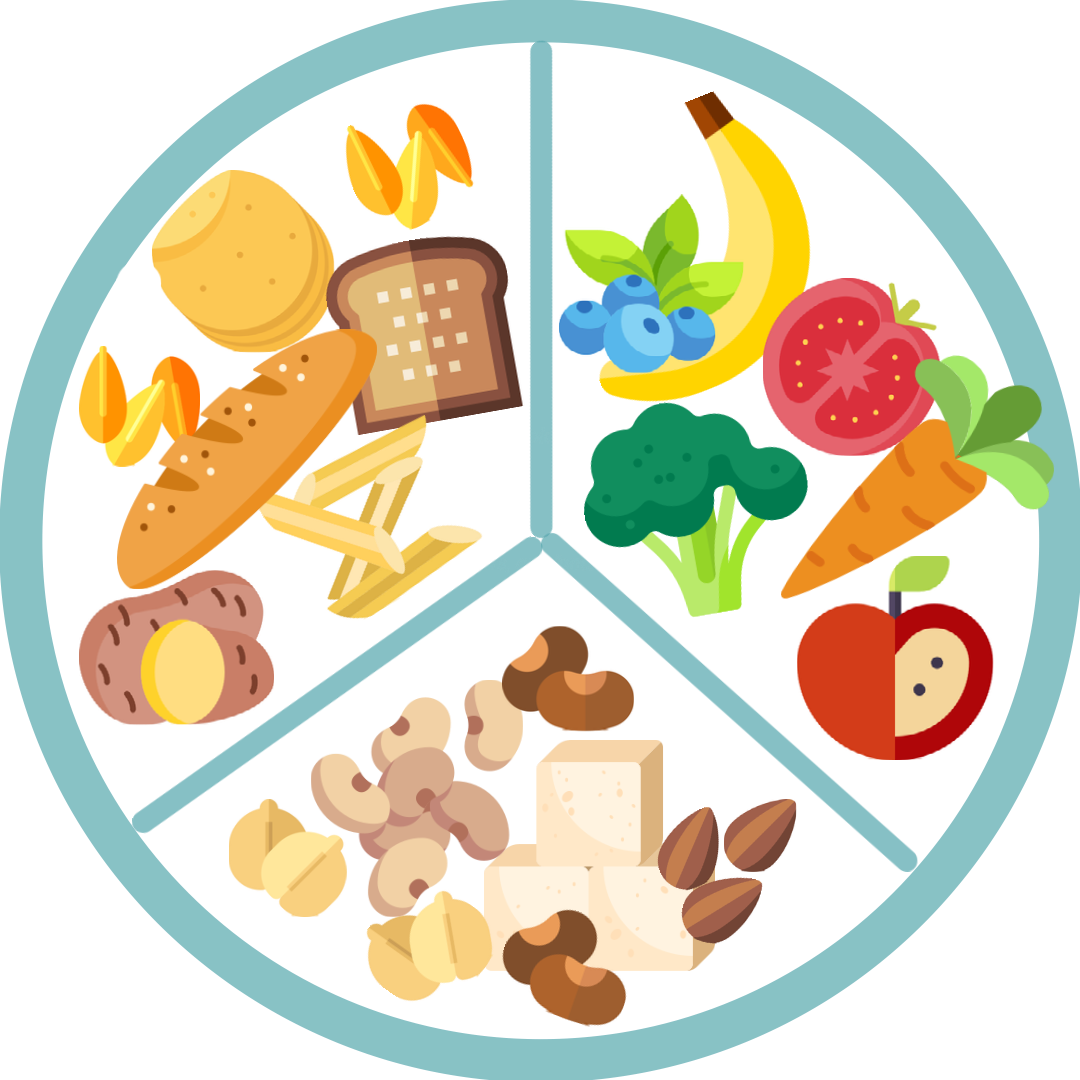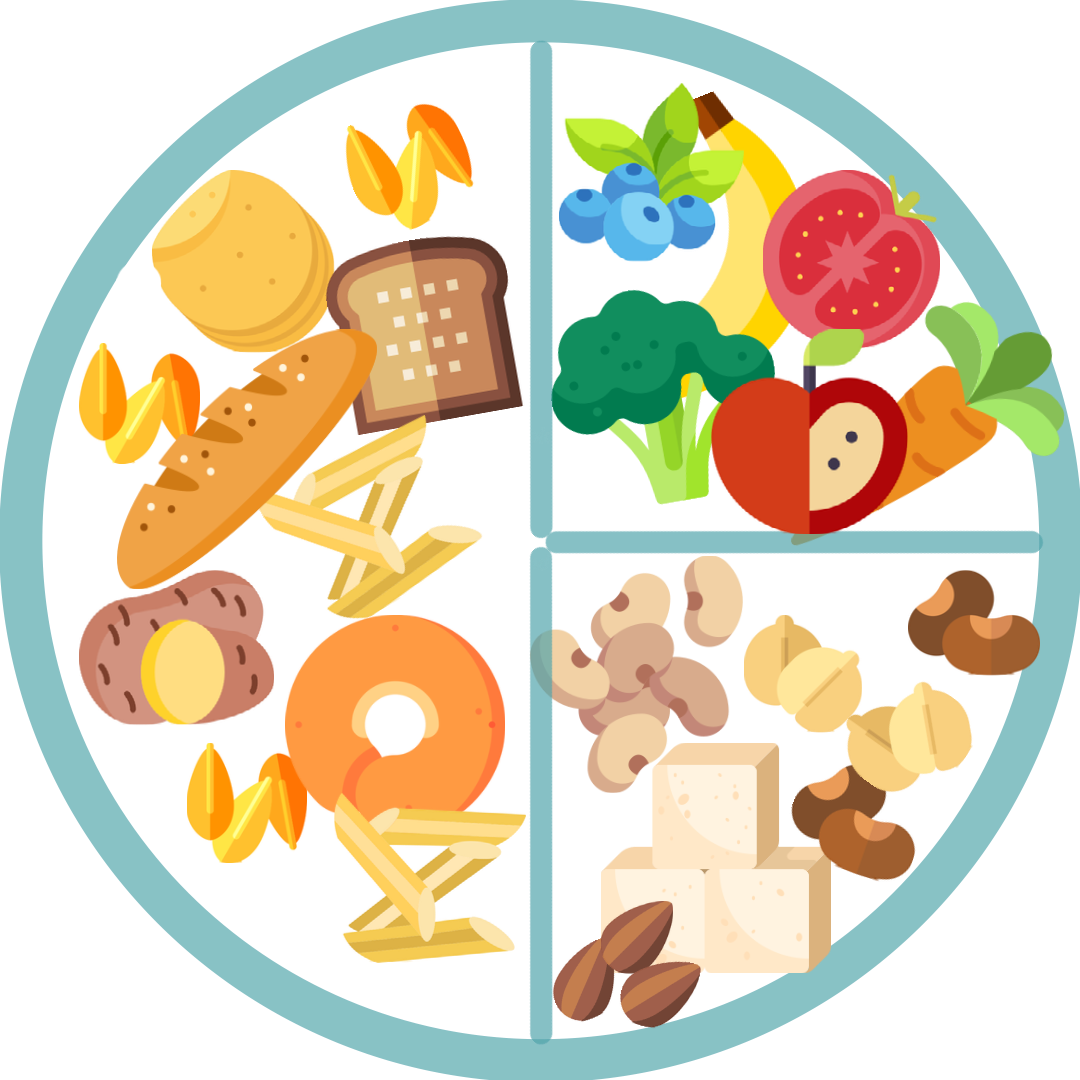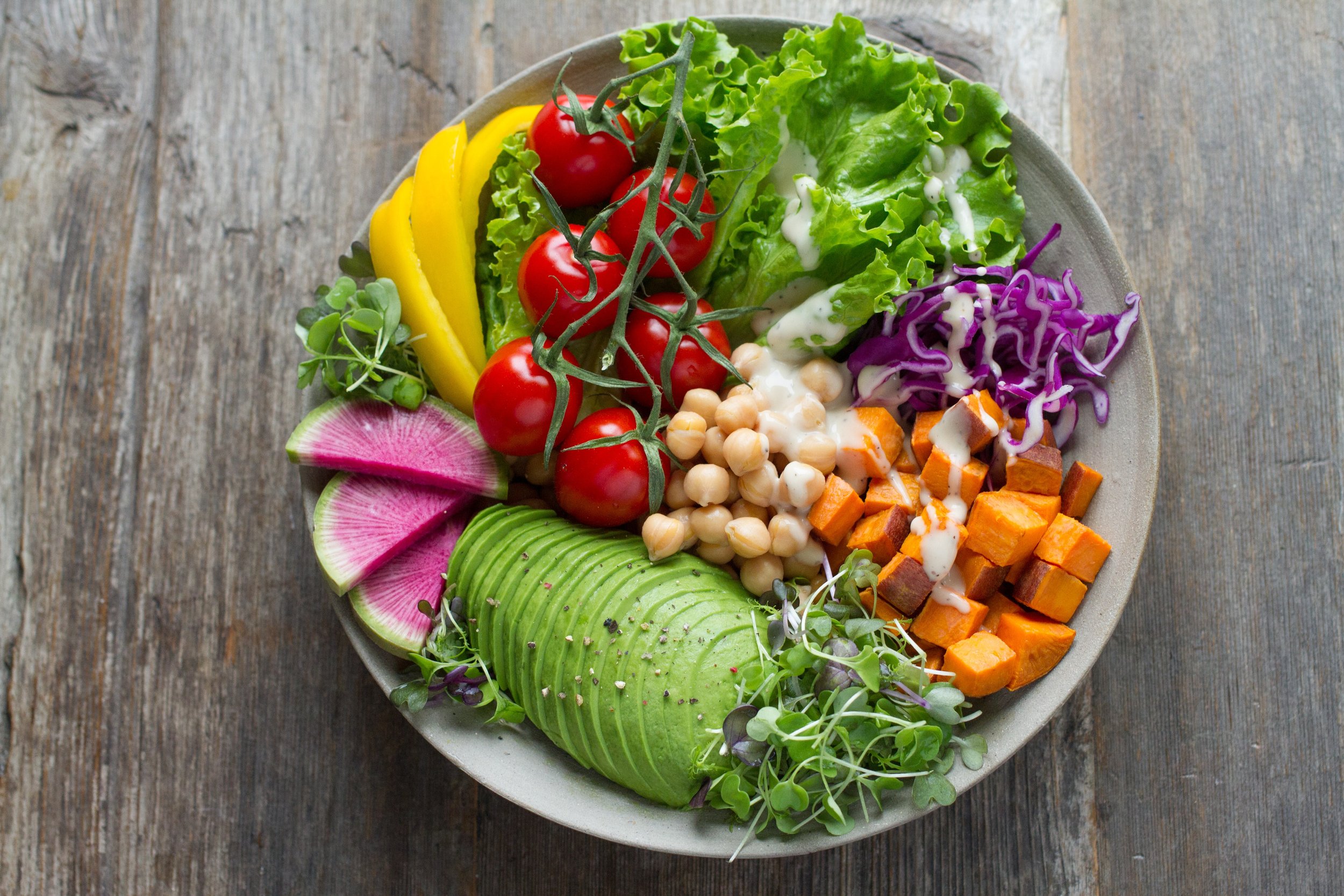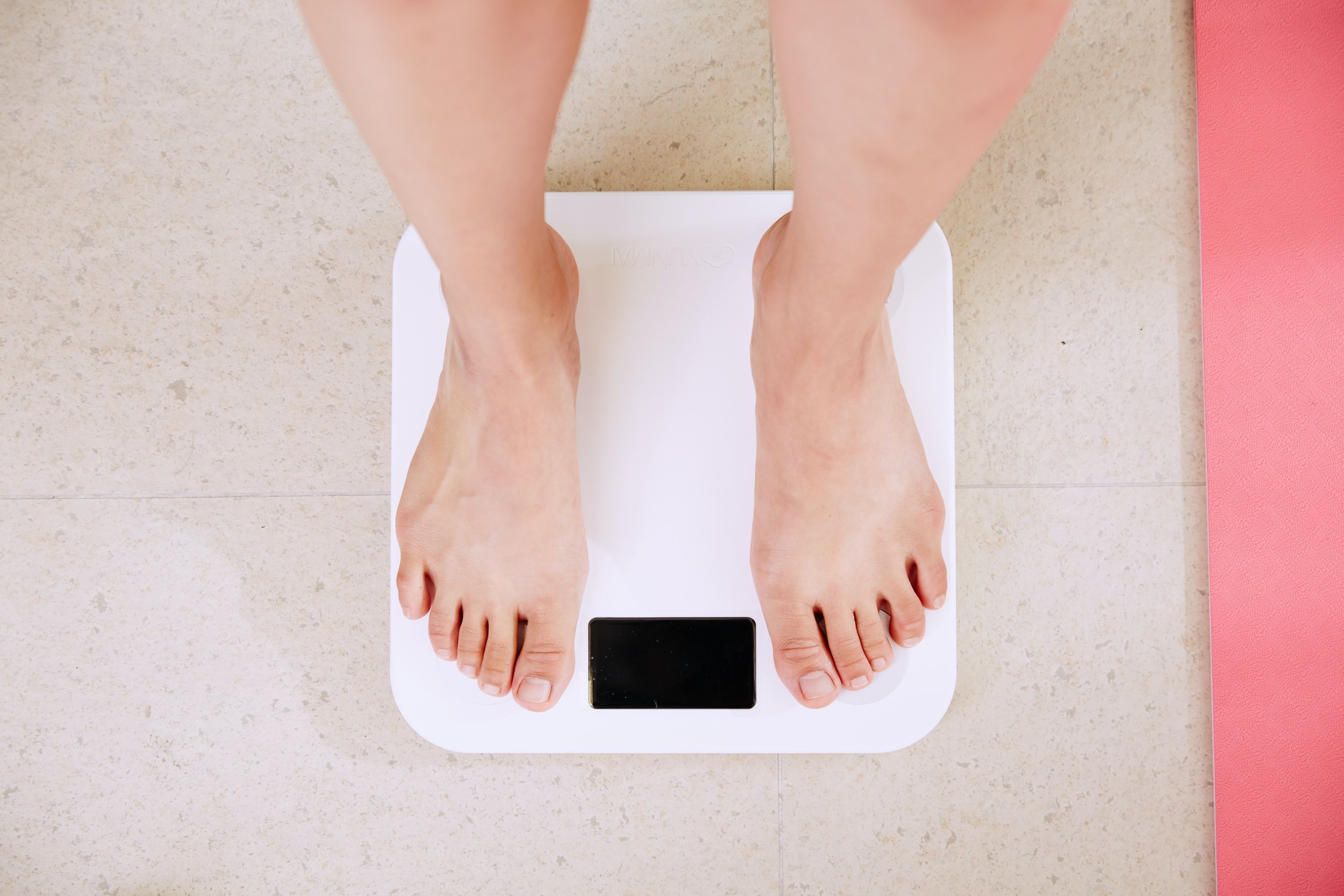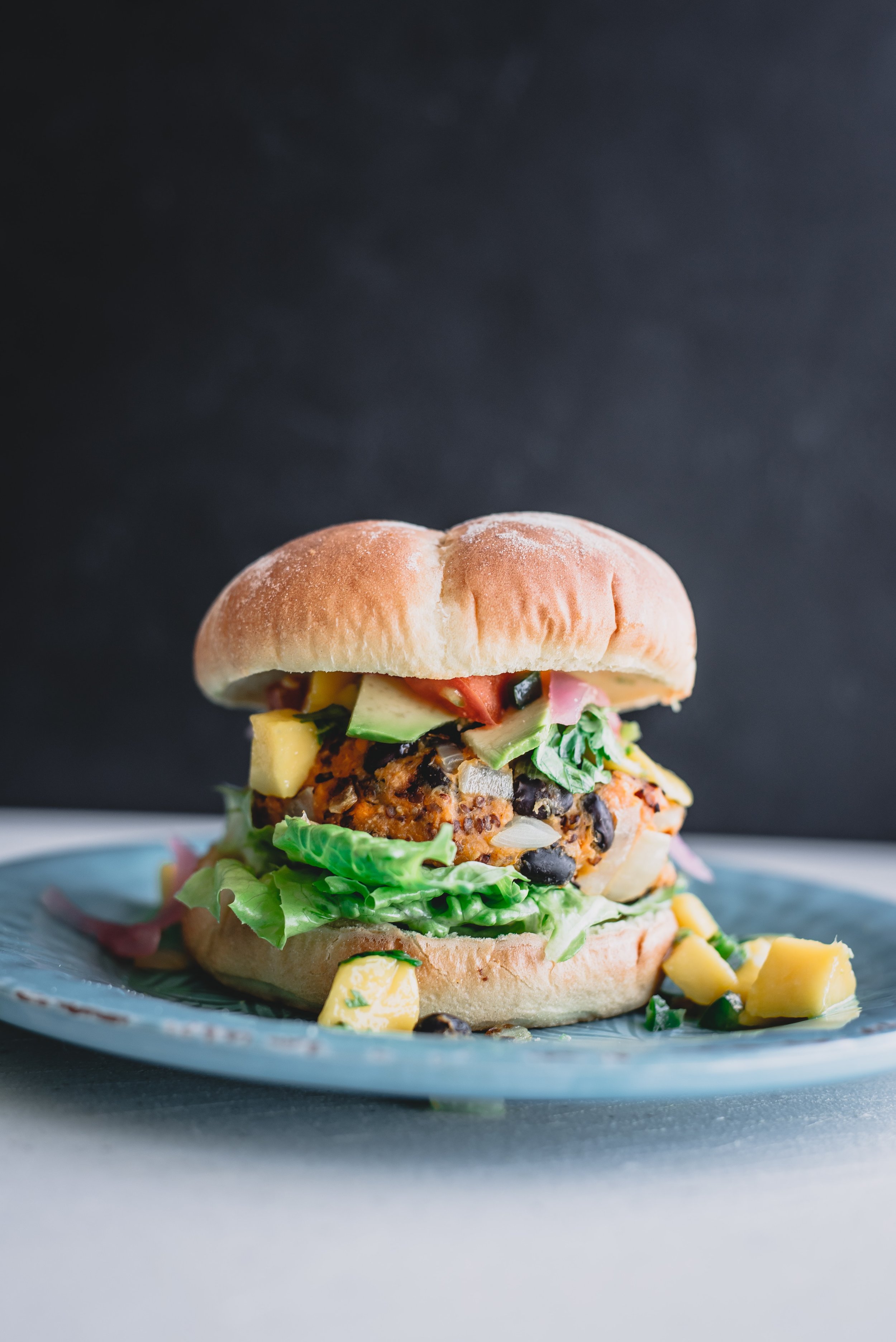Sports Nutrition For Endurance Athletes
Your daily diet has a direct impact on an endurance athlete’s ability to train and recover, and race day nutrition can make or break your event.
While there is not a single right answer to sports nutrition that works for cyclist, triathlete, or runner, there are several elements that are important for everyone, and a few general guidelines can help you find a starting point for your sports nutrition plan. The following sections cover:
For more help creating a personalized sports nutrition plan to help you meet your training and racing needs, check out my nutrition services.
Daily Carbohydrate, Fat, and Protien Needs
While you do not need to count and track your macronutrients, it is useful to understand at a high level at what general ratios you should aim to consume carbohydrates, protein, and fat.
Carbohydrates
Carbohydrates are essential fuel for athletes. Endurance athletes should aim for about 50 to 70% of their total daily calories to be from carbohydrates. The exact amount of carbohydrate that an athlete needs will depend on their frequency, duration, and intensity of training. A general recommendation for athletes training 1 to 3 hours a day is about 6 to 10 grams of carbohydrate per kilogram of body weight. Athletes training 4 to 5 hours per day may need 8 to 12 grams of carbohydrate per kilogram of body weight.
Protein
Protein is important for many reasons in the human body, one of which is building and repairing muscle. Accordingly, athletes need more protein than your average sedentary individual. Endurance athletes should be consuming about 1.4 to 2.0 grams of protein per kilogram of body weight per day, or about 10 to 35% of calories from protein. Protein is best absorbed when you distribute your protein consumption across the day. Learn more about protein needs for cyclists, triathletes, and endurance athletes here.
Fat
Fat is an essential macronutrient, but only small amounts are needed for essential functions. You don’t need to seek out sources of fat because fat is present in small amounts in most foods–including vegetables, whole grains, and beans. If you are getting your fat from plant sources, you know you are getting the healthy types of fat. As previously mentioned, fat from animal sources such as fatty meats and full fat dairy should be limited or left out entirely. 20% is a recommended minimum to make sure you are getting required fatty acids, and fat should not exceed 30 to 35% of calories to ensure heart health and overall dietary balance.
Making This Work in Real Life
Rather than counting calories and weighing food, you can simply picture filling your plate as follows for an easy day of training: one quarter of it should be carbohydrate rich foods such as whole grains and starchy vegetables, one quarter lean protein such as beans, tofu, or lean animal protein, and half fruits and vegetables. As your training load increases, increase your amount of carbohydrates. On a day where you are training or racing about two to three plus hours, half your plate should be filled with carbohydrate rich foods.
The below images approximate what you can visualize. However, keep in mind this doesn’t mean you need less fruit, vegetables, or protein. Rather you need more food overall, and you should be accounting for that by adding complex carbohydrates, ideally from whole foods. By adding additional carbohydrate rich foods such as whole grains and beans, you will also get the additional protein you need.
If you do want to figure out the exact number of grams you need on a daily basis, you will need to start by establishing your Resting Metabolic Rate (RMR) or Resting Energy Expenditure (REE) and then add in your activity level. There are various formulas and online calculators to help estimate this number.
Nurtition for Training and Racing
Before
Making sure you are fully fueled before a training session or a race is a key aspect to your performance. And the primary fuel you need to focus on is carbohydrates. Carbohydrates are the main source of fuel for every cell in your body–including your muscles and your brain. You will want to consume foods and beverages that keep you from getting hungry and digest easily. Include complex carbohydrates and carbohydrate-rich protein sources in your pre-race or training meal. Protein will help maintain and regulate blood glucose levels by slowing digestion and absorption of carbohydrates. Learn more about pre-workout and pre-race fueling here.
During
Different workouts and events may require different fueling needs. If your activity is low-intensity, you can eat towards the lower ranges listed below. If your activity is high-intensity, eating toward the higher range will support better performance. In general, the longer your event, the more you need to eat. However, different people will tolerate food differently. Some individuals can easily consume and digest over 60 to 90 grams per hour, where others can barely tolerate 30 to 40 grams.
Under 60 minutes (easy): Probably not needed
Under 60 minutes (High-intensity or multiple workouts in a day): 20-30g carbohydrates
60 to 90 min: 30g carbohydrates per hour
90 min to 3+ hours: 30 to 60g carbohydrates per hour (and possibly up to 90+ grams)
Absorption rates are important to consider when planning your food. Foods that are primarily carbohydrates, such as sports drink, energy gels and chews, and gummi bears, will enter your bloodstream more quickly (in about 15 minutes). Food items that include fat, protein, and fiber, such as energy bars, potatoes, or peanut butter and jelly sandwiches, will take longer--up to 30 minutes or more. Learn more about what to eat during training and racing and how hydration plays a role.
After
Consume at least 15 to 20 grams of protein, and 1 gram of carbohydrate per kilogram of body weight within 30 minutes of training or competition. This might be a bowl of cereal, a peanut butter and jelly sandwich, or a recovery shake. You can follow this by a complete meal when you are ready to eat again, that includes another 15 to 20+ grams of protein and 1 to 2+ grams of carbohydrates per kilogram of body weight. So basically, eat a normal meal that includes a protein source and carbohydrates as described in the previous section.
Key Foods to Eat Every Day
If you want to optimize performance, you need to optimize your daily food choices too. What you eat on a daily basis has a significant impact on an endurance athlete’s ability to train and recover. Athletes should focus on adding plant-based whole foods to their diet as much as possible as these foods are packed with vitamins, minerals, phytochemicals, and antioxidants that aid in recovery, reduce inflammation, and have been proven to help fight chronic disease.
Vegetables: There is no way around it, you need to eat your vegetables. Aim to include vegetables, starchy vegetables, and greens at every meal. These can be fresh, frozen, or canned. The best kind to eat are the ones you like. Aim for at least five servings per day, more is better. One serving is about 50 to 80 grams, or about 1/2 cup of diced vegetables, or 3 cups of leafy greens.
Fruit: Fresh, dried, frozen, and canned fruit all count here, and are excellent sources of carbohydrates. Avoid fruit canned in syrup. Some diets avoid fruits because of the sugar they contain, but the sugar found in fruit does not have the same effect on your body as the sugar found in something like a pop tart. Fruit contains fiber, which causes it to absorb more slowly in your bloodstream. One serving is about one medium sized piece of fruit or 40g of dried fruit. Aim for four or more servings per day.
Beans: Beans are one of the most nutritious foods you can eat, and most people are not eating enough of them. You can include dried or canned beans such as black beans, pinto beans, chickpeas, navy beans, lentils; hummus; and all soy products such as tofu, tempeh, and soy milk. Beans are packed with vitamins and minerals, and they provide both protein and carbohydrates. When compared with protein from animal sources, they provide more vitamins, minerals, and fiber with less fat and no saturated fat.
If you aren’t currently a regular bean eater, don’t start with a cup of beans all at once. Your body relies on bacteria in your large intestine to help digest the fiber in beans. If you don’t eat beans regularly, you don’t have enough of these little guys to aid with digestion, which results in gas and bloating. Start with a tablespoon or quarter cup per day and work your way up from there to three servings per day. One serving is ½ cup of cooked beans or 60 grams of hummus.
Whole Grains: Grains have gained a bit of a bad reputation lately due to both low-carb fads and the education around the effects gluten can have on people with certain diseases. However, whole grains contain valuable vitamins, minerals, and fiber, and they are excellent sources of complex carbohydrates and protein. Examples include 100% whole grain breads, pasta, tortillas, cereals, popcorn, brown rice, oats, quinoa, barley, and other grains. For most people, there is no reason to avoid gluten–as it is simply the protein found in wheat, rye, barley, and triticale–and athletes should not be following a low-carbohydrate diet.
Nuts and Seeds: Nuts and seeds are a good source of fat soluble vitamins such as Vitamin E, and also Omega 3 fatty acids. Examples include walnuts, peanuts, almonds, cashews, sunflower seeds, pumpkin seeds, chia seeds, and more. Aim for one serving per day which is about ¼ cup for most nuts and seeds, or 2 tablespoons of chia seeds. Athletes who have a difficult time meeting daily calorie needs, or struggle to maintain or gain weight, can add servings here.
For a simple checklist to make sure you are getting enough of these important foods, check out Dr.Greger's Daily Dozen.
Foods to Limit or Eliminate
In general, it can be better to focus on what to add to your diet rather than what to take away. However, there are certain items that you do want to limit or even eliminate entirely.
Saturated Fat: Eliminating saturated fat from the diet has been proven to reverse heart disease and diabetes. Saturated fat includes sources such as animal fats, coconut oil, palm oil, and fried foods. All animal products, including meat, fish, dairy, and eggs, include saturated fat and cholesterol. Limit these foods and choose low fat and lean options. Coconut oil and palm oil come from plants, but they are extremely high in saturated fat. In fact, coconut oil has more saturated fat than butter. Both of these have been find their way into more and more foods. Palm oil can be found in many nut butters and pre-packed energy bars, so check ingredients on your packaged foods, as well as the amount of saturated fat these ingredients add.
Processed meats: The World Health Organization has classified processed meats as a Group 1 carcinogen (known to cause cancer) which means that there is strong evidence that processed meats cause cancer. Eating processed meat increases your risk of bowel and stomach cancer. Processed meats include ham, bacon, salami, hot dogs, and similar foods.
Added Sugar and Oils: These are concentrated sources of calories with little or no nutritional value. Olive oil has long been promoted as a health food, but it is not something you need to specifically add to your diet, as you can get ample amounts of essential fats from whole plant foods. However, if topping your veggies with olive oil makes them more tasty, and helps you eat more of them, then go for it.
You can easily avoid these foods by focusing on eating whole foods and anything that doesn’t come in a package. That may not be realistic for busy athletes with high calorie needs, so just be sure the original form of what you are eating is easy to identify. For example, peanut butter very clearly started out as a peanut and tomato sauce very clearly used to be a tomato. But was a pop tart ever actually a strawberry? And what is the rest of it really? It’s hard to tell.
Related Posts
Sources
Fink, Heather Hederick and Alan Mikesky., Practical Applications in Sports Nutrition. 6th ed.,, Burlington, MA, Jones & Bartlett Learning, 2021.
Photo by Anna Pelzer on Unsplash
